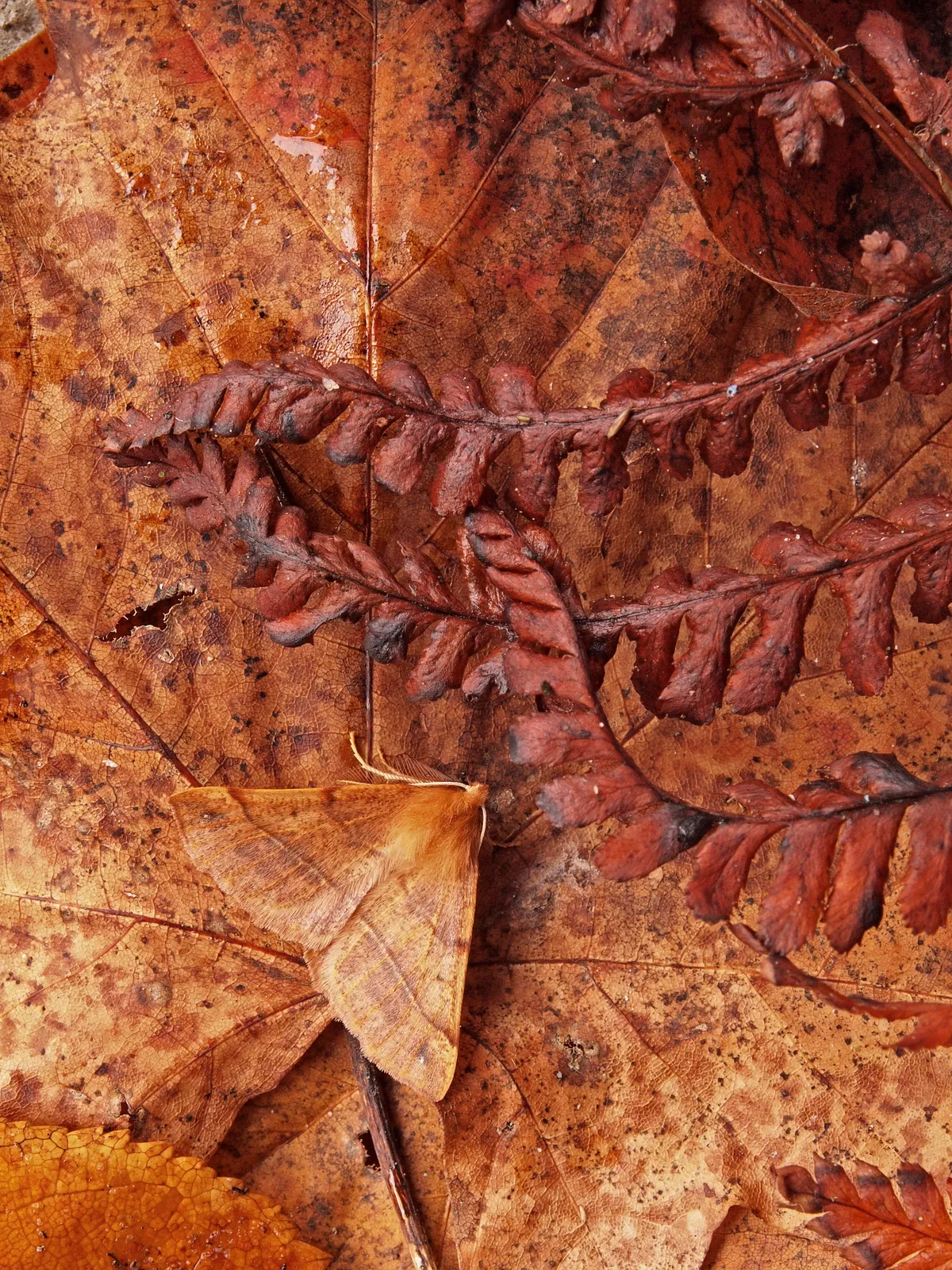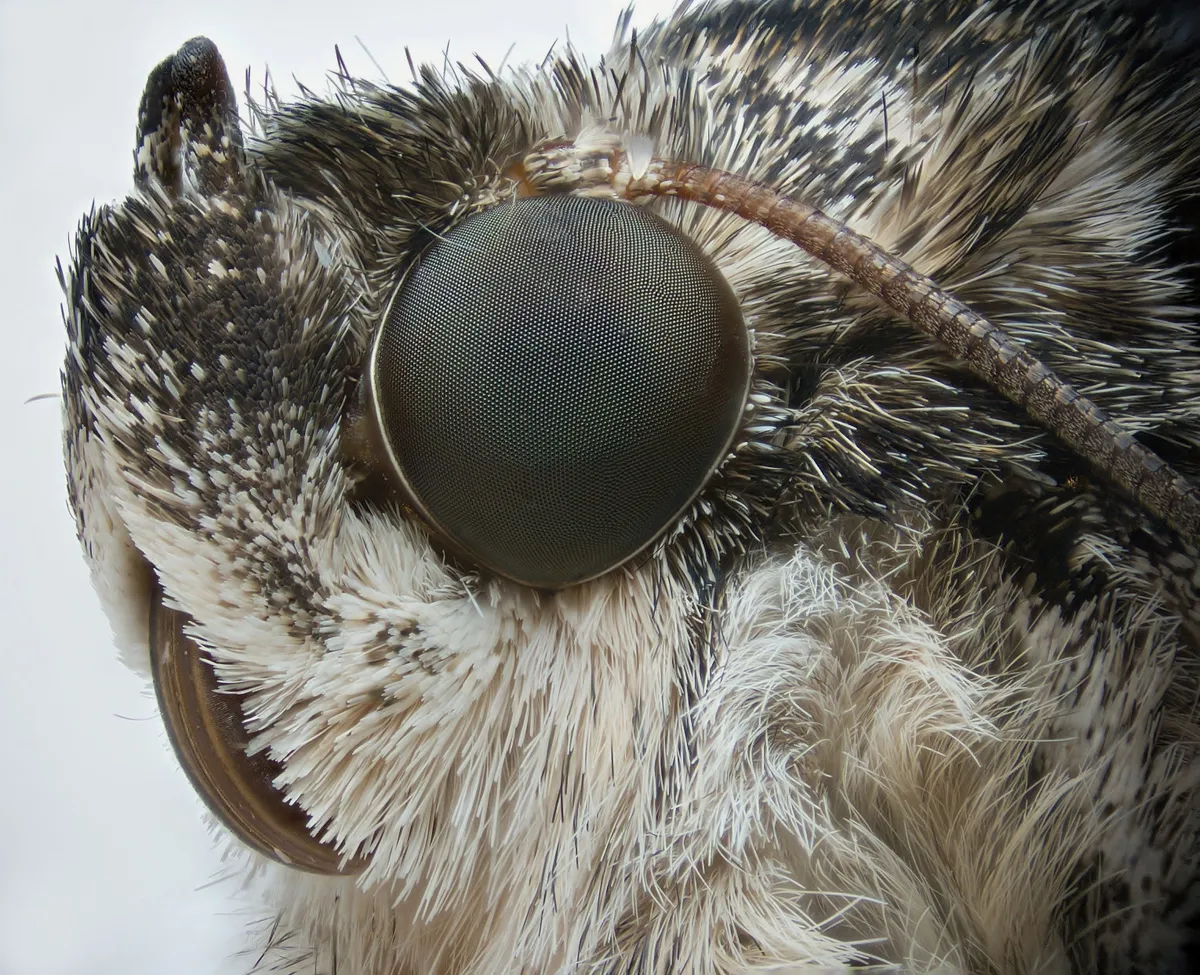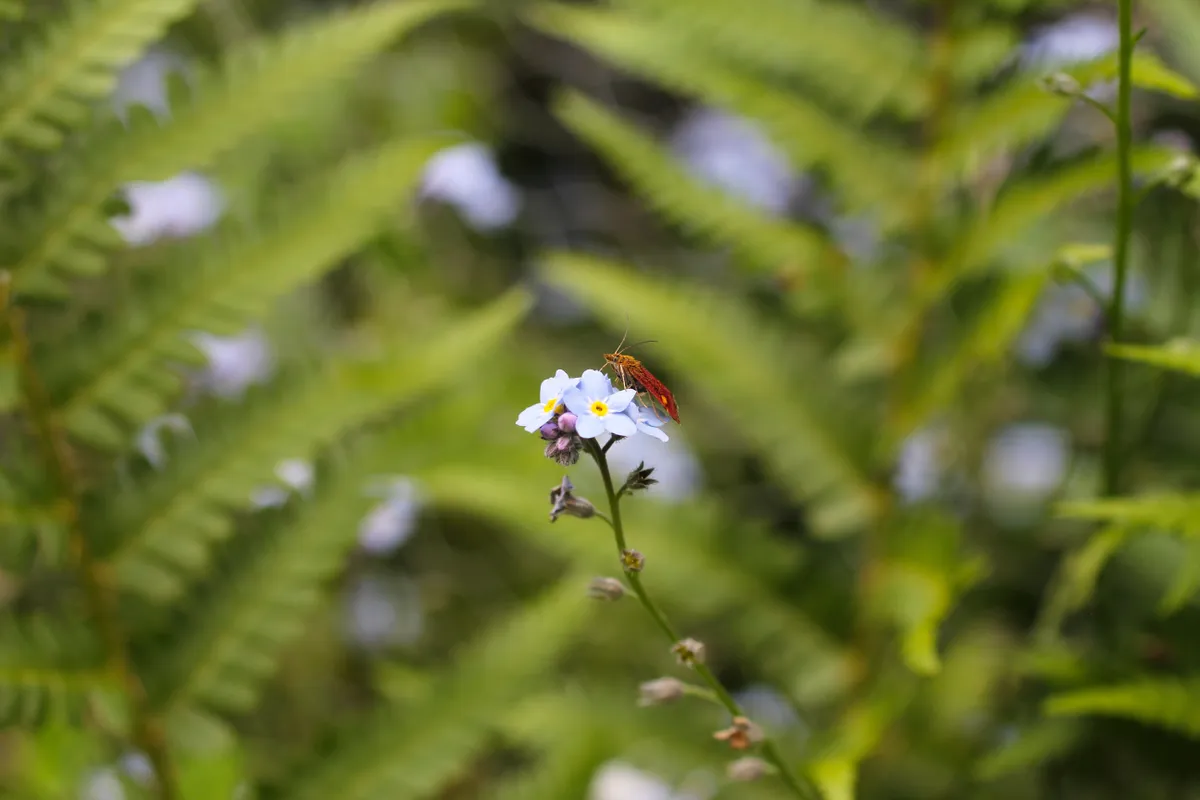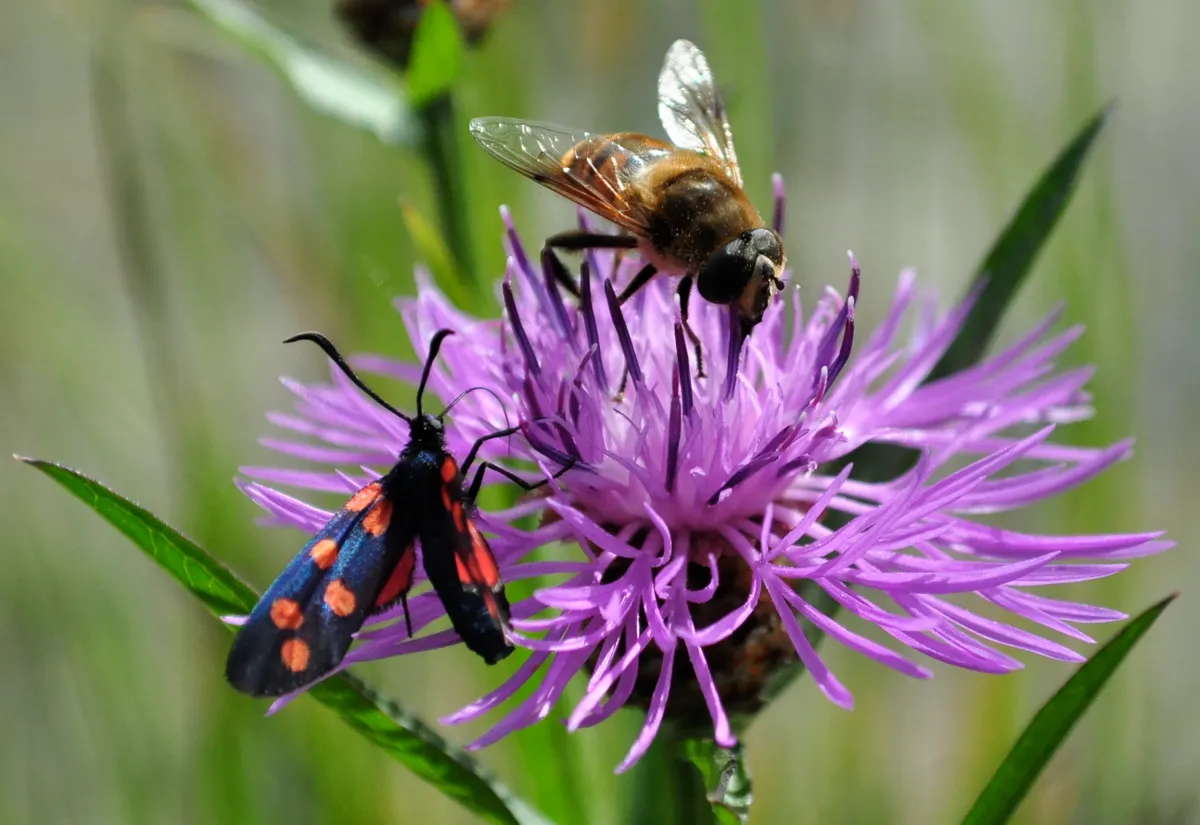Often overshadowed by their more brightly coloured butterfly cousins, moths are abundant and important pollinators in their own right, and essential food for larger animals in gardens and the wider landscape. As part of our Small Stories series in association with the Royal Entomological Society, we discover more about them with Fran Sconce, Entomologist and Royal Entomological Society Outreach Officer, and Dr Hayley Jones, Senior Entomologist at The Royal Horticultural Society and member of the Royal Entomological Society Outreach & Development Committee.
- Read: Aphids are one of the most remarkable insects on the planet
- Read: Dragonflies and damselflies: once had wingspans of almost 1 metre and weighed the same as a crow
Everything you need to know about moths
In folklore common to many cultures, moths have long been associated with ‘witches’ and butterflies with ‘fairies’, which might explain some of the associations that endure between moths and death, grief and loss. Moths tend to be more feared than butterflies, and knowledge about the positive role they play in the ecosystem less well understood. Despite only three of the 2,500 UK moth species feeding on natural fibres (expensive cashmere often being a favourite!) moths are also often most associated with holes in clothes and carpets.
Moths tend to be more feared than butterflies, and knowledge about the positive role they play in the ecosystem less well understood.

We have some truly stunning moths resident here in the UK, with tens of thousands more around the world. Moths can vary in size, in the UK the largest is the Privet Hawk-moth (Sphinx ligustri) with a wingspan of up to 12cm. The group known as ‘macro-moths’ (wingspans generally larger than 1cm) are well studied, but there are many ‘micro moths’ that are less well known, the smallest have wingspans of just a few millimetres and there are likely to be more species still to be recorded.

Butterflies don’t have the monopoly on bright colours; moths come in a full range of rainbow colours, and even the brown and grey species have fascinating wing patterns and forms. These colours and patterns are made by the scales on their wings, from which their scientific name Lepidoptera or ‘scale –wings’ arises. These patterns are important for attracting and finding a mate and providing ingenious camouflage from predators. Some species have strong differences between male and female appearance, such as the Winter Moth (Operophtera brumata); the female has legs and a body, but no wings. She walks up into the canopy of a tree to release sex pheromones to attract a mate, laying eggs in cracks in its branches and bark so her offspring can feed on the leaves after her eggs have hatched.
Butterflies don’t have the monopoly on bright colours; moths come in a full range of rainbow colours.

Moths undergo full metamorphosis – an incredible transformative process common across the majority of insect species. After mating, most moth species lay their eggs on a specific plant which will in turn provide food for the moth larvae, known as caterpillars. Once fully grown the caterpillar pupates or forms a chrysalis, from which the adult emerges.

A huge range of habitats are home to moths, including gardens, meadows, forests, coastlines and more. Most moths feed on live plants, with many having a specific host plant their caterpillars will feed on. Some are more generalist, able to feed on a wide variety of leaves depending on availability. A very small number of species feed on things other than plants such as the Common Footman (Eilema lurideola), which eats algae and lichens, or the Waved Black (Parascotia fuliginaria), which eats fungi and rotting wood. Just four species are associated with houses, three are known to eat natural fibres although one of these, the Tapestry Moth (Trichophaga tapetzella), has been scarcely seen over the past 50 years, and the other eats stored products such as flour.
Most moths feed on live plants, with many having a specific host plant their caterpillars will feed on.

As well as providing beautiful flying visitors to a garden, moths are an essential part of the food chain, providing essential protein for other animals such as birds, bats, predatory beetles and many more. Gardeners have come to view moth caterpillars feeding as damage to plants, holes in vegetable and ornamental plant leaves seen as unsavoury. As entomologists, fascinated by the intricate ecosystems that insects underpin, we would urge gardeners to learn to tolerate some holes in plants and perhaps provide alternative plants and wilder areas for moths (and their colourful cousins) to feed on.
We would urge gardeners to learn to tolerate some holes in plants and perhaps provide alternative plants and wilder areas for moths.
Balance in the garden can be achieved encouraging a diverse range of wildlife that will feed on moths and their caterpillars, keeping populations in check. Birds, bats, hedgehogs, ground beetles, social wasps and many more species rely on moths and their caterpillars for food. You can attract natural enemies such as social and parasitoid wasps, which are also pollinators, by adding pollen rich flowers to your borders. The RHS Plants for Pollinators lists are a great resource and a good place to start if you’re unsure about what might be suitable. Ground beetles and other wildlife can be encouraged with dense and diverse vegetation including trees, shrubs, herbaceous plants and grasses.
If you enjoyed this article, read our Small Stories piece on dragonflies and damselflies.
Moth fact file
• We have around 2,500 species of moths in the UK with 160,000 globally, compared to around 60 UK butterflies species and 17,500 globally.
• The largest moth in world is the atlas moth (Attacus atlas) with a wingspan of up to 27 cm. It is native to south east Asia and most of its life is spent as a caterpillar. The adult moths don’t really feed and only live for a few weeks, in which time they mate and lay eggs.
• The lobster moth (Stauropus fagi) derives its name due to its caterpillar mimicking the appearance of a lobster. Present throughout southern Britain, lobster moth caterpillars feed on oak and beech.
• Although moths are known for being largely nocturnal, there are several brightly coloured moths that fly in daytime. Metallic green forester moths (Adscita statices), black and red cinnabar moths (Tyria jacobaeae), which have characteristic black and yellow caterpillars, and burnet moths (Zygaena genus), can all be seen during the day.
• Moths can vary in size, in the UK the largest native species is the privet hawk-moth (Sphinx ligustri), with a wingspan of up to 12cm, but some are just a few millimetres in size and there are likely to be many more that have not yet been recorded.
Follow #GISmallStories on social media to join the conversation.